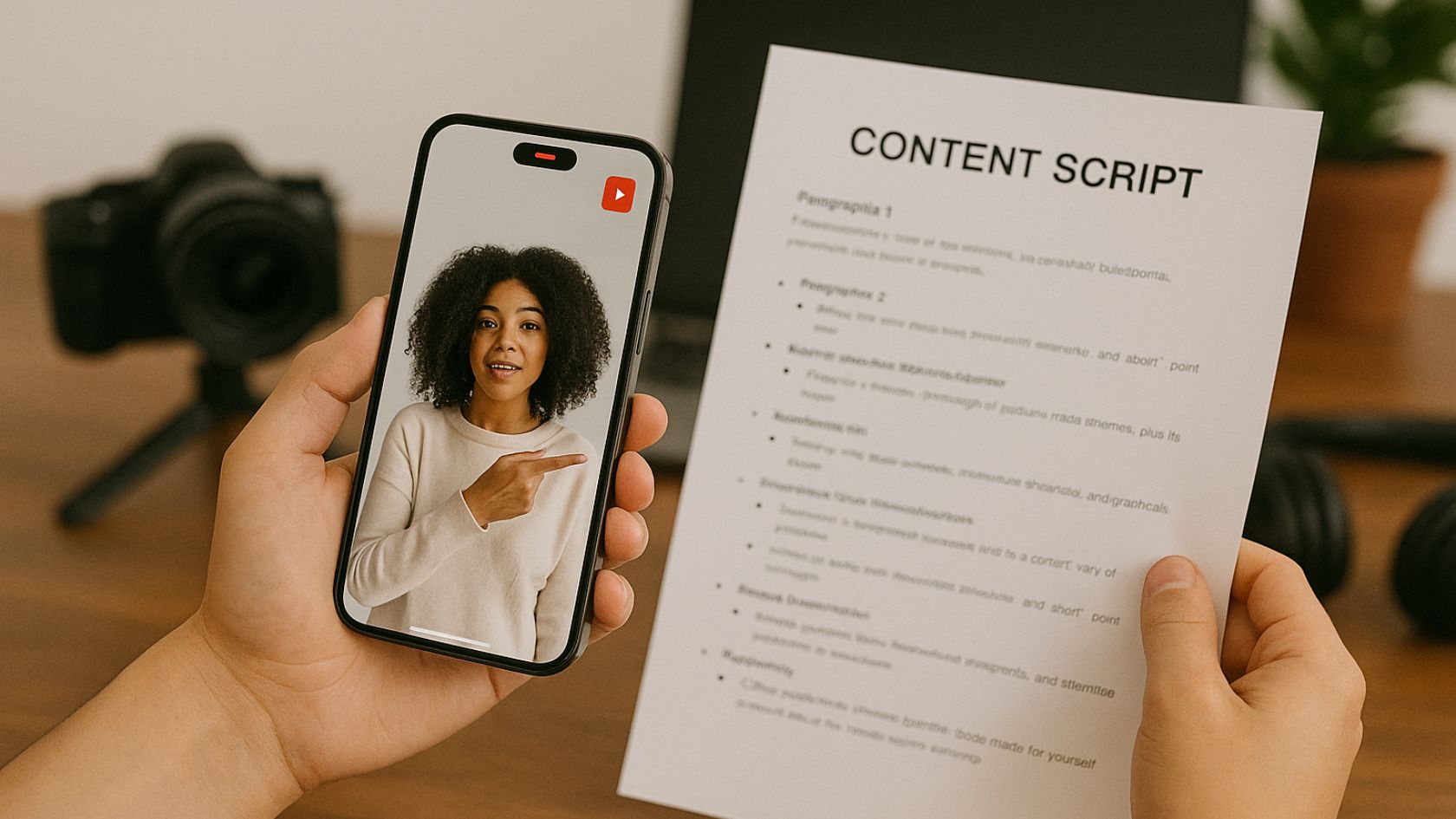
Creating Effective YouTube Shorts: Proven Strategy, Scripts, and Optimization Tips

Creating Effective YouTube Shorts begins with understanding how viewers swipe, decide, and commit within the first two seconds—and then sustaining that interest with tight scripting, punchy visuals, and crystal‑clear value. When you design Shorts intentionally for the vertical feed, your retention climbs, the algorithm tests you with wider audiences, and your channel growth compounds.
Many creators treat Shorts like trimmed leftovers from long videos, but performance spikes when you build for vertical from the start—tight framing, bold on‑screen text, and a crisp first line that promises a payoff. For inspiration and peer feedback, you can skim helpful community threads such as this advice post for new YouTube Shorts creators to see what’s working right now.
Shorts are not just “short videos.” They’re a distinct format with their own rhythms: an early pattern interrupt, a fast visual cadence, and a satisfying end beat that makes viewers either watch again or continue to your next Short. Treating the format as its own craft is how you build a loyal loop of repeat viewers.
Before you hit record, outline your promise, proof, and payoff in one page. A simple pre‑production checklist saves hours later and raises your floor quality. If you prefer a deeper, step‑by‑step walkthrough of creative workflow, this guide on best practices for video creation is a solid companion to keep your process consistent.
Audience intent and topic selection
Start with intent. Why would a cold scroller care? Map topics to quick wins: micro‑tutorials, “before vs after” transformations, myth debunks, mini‑case studies, teardown reactions, or 3‑step lists. Your idea should deliver a visible or emotional result in under 60 seconds. Keep a running idea bank and evaluate: Is the hook clear? Is the outcome tangible? Can I show it, not just say it?
The 3‑part Short framework
- Hook (0–2s): State a bold promise or pose a curiosity gap. Examples:
- “This trick doubled my view duration in 3 clips.”
- “3 mistakes ruining your YouTube Shorts—fix #2 today.”
- “Watch me turn this boring clip into a viral Short in 30s.”
- Value (2–40s): Deliver the steps, proof, or demo with relentless clarity. Show on screen what you are talking about using split screens, over‑the‑shoulder, or quick overlays.
- Loop/CTA (40–60s): Close the loop you opened in the hook and trigger an action: “Part 2 next,” “Full breakdown on channel,” or “Tap the playlist for templates.” A subtle visual loop (returning to the first frame) nudges replays.
Script templates you can copy
A. Problem → Proof → Payoff
0–2s “Your Shorts die at 3s? Try this.” → 2–25s Show the retention graph and the fix → 25–55s Apply it to a clip → 55–60s “Save this for your next edit.”
B. Step‑by‑step How‑To
Hook: “Make captions that 2× watch time.” Steps: Style > Placement > Contrast > Emphasis > B‑roll. Payoff: Side‑by‑side before/after.
C. Transformation/Reveal
Start with an ugly or incomplete “before,” then fast‑cut your process, and end with a satisfying reveal that mirrors the first frame.
Visual and audio fundamentals
- Format: 9:16, 1080×1920, 24–60 fps. Bright, high‑contrast visuals read best on phones.
- Framing: Face or subject roughly eye‑level and centered. Avoid placing key text under the interface chrome (lower 15%).
- Captions: Always on. Big, high‑contrast, and synced. Bold key words to match the beat.
- Sound: Prioritize clear VO. Use light music at −24 to −18 LUFS relative to voice. Cut music on punchlines for emphasis.
- Cadence: Change something every 2–3 seconds—angle, zoom, graphic, b‑roll, text highlight—to prevent swipe‑aways.
Editing workflow that saves time
- Radio edit first: Lay down voiceover or talking track only; remove ums, tangents, and pauses.
- Picture edit: Add b‑roll and screen recordings that literally show the words being said.
- Text layer: Burned‑in captions with emphasis on power words; don’t rely solely on auto‑captions.
- Polish: Add pattern interrupts, whoosh cuts, and match‑on‑action transitions. Export at high bitrate (10–16 Mbps).
On‑screen text that drives retention
Use a top bar for context (“Day 12 of 30”), big centered captions for lines, and small labels for steps. Keep 5–8 words per line. Use contrast boxes behind text when the background is busy. If you emphasize a word, emphasize the visual at the same time (zoom punch or flash frame) so the brain binds the moment.
SEO for Shorts without keyword stuffing
- Title: Promise outcome + specific angle. Example: “Create Viral Captions: 5 Visual Tricks for YouTube Shorts.”
- Description: 1–2 natural sentences with a primary keyword and related phrase. Avoid blocks of hashtags.
- Tags & Hashtags: Use brand and topical tags (#shorts optional). Prioritize clarity over volume.
- Filename: Include your main keyword in the export name. It’s a minor signal but tidy hygiene.
Posting cadence and analytics that matter
Consistency compounds testing. Post 3–5 times per week for 4 weeks on one theme to let patterns emerge. In YouTube Analytics, watch these:
- Average view duration (AVD): Aim for 60–85% on successful Shorts.
- Swipe‑away rate at 0–3s: Fix hooks that are visually quiet or verbally vague.
- Views per viewer: Playlists and series drive session depth—format your endings to invite the next Short.
- Traffic source: If Shorts Feed is low, your first frame likely isn’t earning enough watch time vs. impressions.
Calls‑to‑action that don’t kill retention
Lead with value, end with a soft nudge. Examples: “Save for later,” “Comment ‘CAPTIONS’ for the style preset,” or “Full tutorial linked on my channel page.” Place CTAs after delivering the payoff and keep them under three seconds. Visual CTAs (animations that point to your playlist) often outperform verbal ones.
Common mistakes to avoid
- Late hook: If your first visual doesn’t change the viewer’s state, they’ll swipe.
- Dense text: Too many words per frame reduces comprehension and watch time.
- Low contrast: Dim lighting and gray text vanish on mid‑range phones.
- Recycling widescreen: Cropping long‑form rarely beats vertical‑native storytelling.
- No story beat: Even tutorials need micro‑stakes: “Will this work?” “Can we do it under 30s?”
Advanced tactics for extra lift
- Open loops: Tease a part two or a downloadable preset without withholding the main value.
- Series packaging: Use consistent framing, title style, and opening line so new viewers recognize your niche.
- Batched hooks: Record 5 different hooks for the same body. Publish the best cut; archive the rest for remixes.
- Remix winners: Take your top 10% Shorts and re‑edit: faster captions, tighter cuts, alternate soundtrack, or new hook.
Simple production toolkit
Capture
- Phone with 1080p or 4K and good stabilization.
- Clip‑on lav mic or USB mic; monitor peaking.
- Two small LED panels; bounce off a wall for soft light.
Edit
- Any NLE with fast text tools; set a 1080×1920 vertical sequence.
- Caption styles saved as templates for speed and consistency.
- Keyboard shortcuts for ripple delete and add edit to keep you fast.
Examples of hooks you can adapt
- “I ruined 3 Shorts before I learned this caption trick.”
- “Steal my 30‑second edit workflow (watch me do it live).”
- “Turn boring stock into a scroll‑stopping Short—here’s my cheat sheet.”
- “You’re placing text here. Move it up and watch retention jump.”
Conclusion
Creating Effective YouTube Shorts becomes far easier when you commit to a repeatable system: hook early with a strong visual promise, deliver one clear outcome with brisk edits and readable captions, and close on a loop or CTA that encourages the next view. Master those beats, test relentlessly, and use simple tools to stay consistent. When you’re ready to scale discoverability beyond organic, explore ethical in‑stream promotion tools to amplify proven winners without distracting from your core craft.
Key takeaways
- Design for vertical from the start; don’t crop long‑form.
- Hook fast, change the visual every 2–3 seconds, and caption everything.
- Promise → Proof → Payoff works across niches—keep your outcome tangible.
- Measure AVD and first‑3‑seconds swipe‑aways; fix hooks before anything else.
- Batch ideas, record multiple hooks, and remix your top performers.